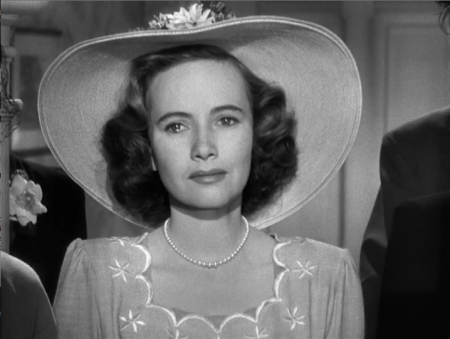Hello, readers of The Film Experience – Matt Zurcher, here. Aside from joining in on a few recent editions of Hit Me With Your Best Shot, it’s my first time writing at The Film Experience. I want to publicly thank Nathaniel for inviting me to cover for him today. In order to introduce myself, I wanted to make a little list focused on a trademark of this site – the adoration of actresses.
Is it possible to fall in love at the movies? I’m not talking about the fleeting arousal that Hollywood manufactures so well – I’m talking about that strange, lingering fantasy. Pauline Kael’s book titles – “I Lost It at the Movies,” “Going Steady,” “Reeling,” “When the Lights Go Down,” and “Movie Love” – all render moviegoing as a sexual experience. I can’t disagree with Pauline. There is something deeply intimate going on between the viewer and the screen. Fiction isn’t so far from Fact. When we’re properly pulled in, we don’t separate our feelings for the person sitting next to us from the person whose face is 20 feet tall.
These are five performances that continue to enchant me. Who have you fallen for in the dark?
5. Teresa Wright, The Best Years of Our Lives [Wyler, 1946]

I want to give the biggest high-five to the casting director of Best Years of Our Lives. Teresa Wright was not the most beautiful or charming choice to play the romantic lead and daughter of Frederic March’s WWII veteran. But her presence in Best Years is warmer than a Snuggie. She is the ultimate girl to take home to your parents. She isn’t sexualized and creates a portrait of calm concern for her family and relationships. She plays a young woman who believes in the value of emotional intimacy. Gregg Toland’s photography can’t be left out of this discussion. It’s a perfect example of Hollywood manufacturing the impossible ideal that pushes film so close to us.
four more lovely ladies after the jump
4. Kay Francis, Trouble in Paradise [Lubitsch, 1932]

Trouble in Paradise is a magnificent beast. Made in 1932, it’s a surprising masterpiece among cinema’s weakest period.
Kay Francis plays a wealthy perfume manufacturer who is pursued by Herbert Marshall’s relentless, charming thief. Trouble focuses on Marshall’s character, but his encounters with Francis remain some of the steamiest scenes in Hollywood history. The “Lubitsch Touch” might just be a wink, but Trouble insists on sex at every possible juncture. Shots of shadows on a bed and dissolves off of a couch encourage a type of blatant sexuality made possible by the lack of a production code. Francis tells the whole story with her eyes. They’ll narrow in suggestive playfulness or widen with irresistible amusement.
3. Joan Fontaine, Letter from an Unknown Woman [Ophüls, 1948]

Letter from an Unknown Woman’s heartbreaking force is about as unavoidable as gravity. Joan Fontaine portrays a woman battered by unrequited love. Her innocent countenance has never been better recognized or exploited than it was by Max Ophüls. He understood that Fontaine’s pleading eyes and commitment would lead the audience to the eventual tragedy.
2. Eva Marie Saint, North by Northwest [Hitchcock, 1959]

Hitchcock’s obsession with sexuality is not a secret. In fact, it’s one of his most valuable traits. His most popular masterpieces all contain independent blonde actresses who aid in catalyzing the primary conflict. Eva Marie Saint doesn’t have the fire of Kim Novak or the elegance of Grace Kelly, but she might have been the only actress who could match wits with Cary Grant’s Roger Thornhill. North by Northwest has the tightest script in Hitchcock’s catalog – look no further than the extended love scene between the two leads, stuffed into a small cabin.
1. Ingrid Bergman, Casablanca [Curtiz, 1941]

Is anyone able to walk away from Casablanca without bittersweet desperation? Think about the daring ending. Would we still be talking about it if Bogey got on the plane with Bergman? Is that how Hollywood might execute the ending today?
In so many ways, Casablanca is an enigma – a singularity. It is a wartime commentary, timeless romance, and pinnacle of the studio system. But one thing cannot be argued – the electric, elegant presence of Ingrid Bergman. Her eyes that shine with tears as Bogey reveals his plan – Her subdued nostalgia when talking to Sam – Her composed response to frequent flattery from Renault. Bergman delivers a stable, measured performance that is far from risky (she played some much more adventurous roles) but I can remember watching her for the first time when I was 13. She showed me what beauty looks like.